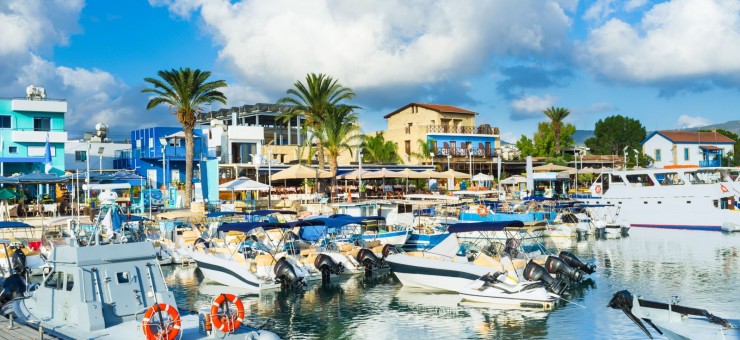Polis
The area around the town of Polis in the north western tip of Cyprus, is possibly one of the most beautiful parts of the island, a place where legend has it Aphrodite once roamed, and perfect throughout the year for both short weekend visits, as well as for longer stays. This is the place to come to relax, as life here continues at a gentle pace. It's not surprising that the Polis region together with the rest of the Pafos district have been chosen as a Top 20 most green and in harmony with nature destination, as well as a Destination of Excellence in "Accessible Tourism", part of the EDEN project promoting sustainable tourism development model-destinations across the European Union. In addition a large part of the Polis region, and the Akamas area in particular, are part of the EU-wide network of nature protection areas, Natura 2000.
This is the place to appreciate nature at its best. With the Troodos mountains as a backdrop opening up onto the magnificent sweep of the bay, the land along the coast is typically Mediterranean dotted with olive and carob trees, hidden coves and rugged promontories, fishing ports and hinterland villages. A hike or cycle along specially created nature trails will take you past rare endemic plants, like the Cyprus orchid, tulip and crocus. Stop to watch as a hawk glides overhead or listen to the owls call at night. Visit picturesque villages nestling in the hills, or take a jeep safari into the Akamas nature park. The region offers great opportunities for taking fantastic photographs of breathtaking views and beautiful sunsets. You might catch sight of green or loggerhead turtles who nest on any of the beaches around the bay.
Whatever your interests there's much to see and do in the area. With warm crystal clear seas, no tides or undercurrents, the Polis region is perfect for water sports, from water skiing, to windsurfing, sailing, and deep water fishing. and scuba diving. Take a boat trip along the dramatic coastline and discover the magic of the underwater world by snorkelling or scuba diving off the Akamas coast. Or just laze in the sun on one of the many uncrowded beaches. In the evenings stroll along Polis' pedestrian area and take in the sights and sounds of the town.
If culture is what you're after, visit the archaeological museum in Polis which displays fine artefacts from the area where the ancient city-kingdom, Marion-Arsinoe, once stood. Examples of Byzantine art can also be seen in various small churches and museums which also have interesting exhibits of folk art. The town of Polis itself has its own architectural character, with its stone buildings, ornate doorways and interior courtyards and arches.
Located within a rich fertile plain in the foothills of the Troodos mountains, the small town of Polis, which in Greek simply means 'town', overlooks the beautiful bay, with its warm, clear and safe seas. With its quaint sandstone buildings around a pedestrianised town centre with its restaurants, bars and souvenir shops, it is a delightful place to hang out on a summer evening. Don't miss the Church of Agios Andronikos near the town square, with its 16th century wall paintings, which for 400 years served as a mosque and today stands as a monument. The 18th century church of Agia Kyriaki is also interesting or the open-air naive sculptural exhibition. The small church of Agios Nikolaos in the pedestrian precinct is also used for Catholic masses. A small eucalyptus wood lies between the town and the sea, providing shade for a camping site by the beach. Polis is a 45 minute drive from Pafos airport and just over two hours from Nicosia.
Officially, the town's full name is Polis Chryssochous, which means the 'town of gold', thanks to the nearby copper and gold mines. It is believed that Mycenaean Greeks first settled in the area about 3000 years ago, while legend has it that returning heroes from the Trojan war established a city here. One of Cyprus' ten great city-kingdoms, called Marion, flourished here thanks to the nearby mines and the resulting trade. Marion had strong ties with Athens but subsequently fell to the Persians. When Kimon, the great Athenian general, tried to free Cyprus from the Persians, Marion was the first city he liberated. A statue in memory of Kimon stands in front of the Polis cultural centre. Later Marion was destroyed during the success struggle following Alexander the Great but was finally rebuilt by Ptolemy II who renamed it Arsinoe after his wife and sister. The Polis archaeological museum in the heart of the town has finds from Polis' glorious past.

